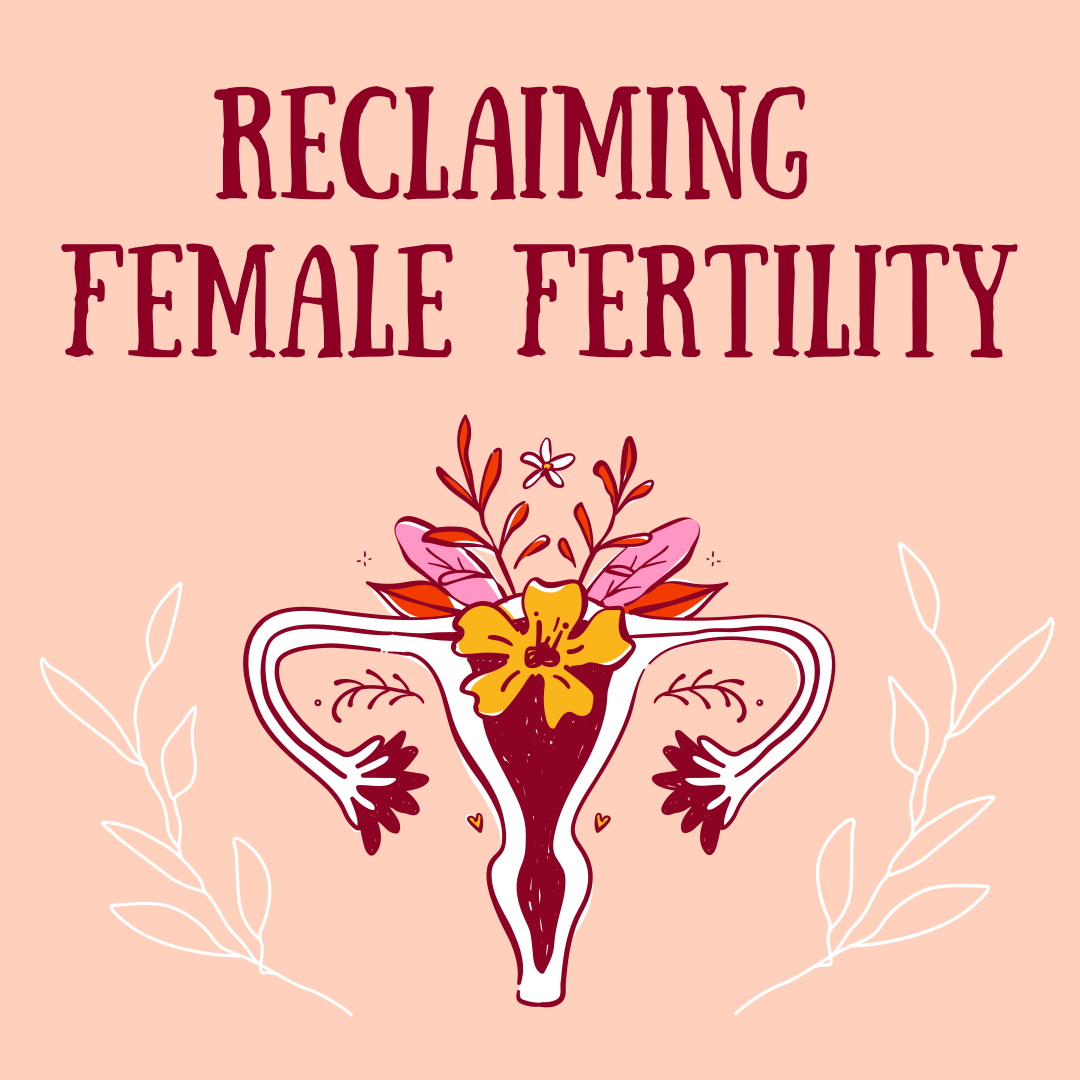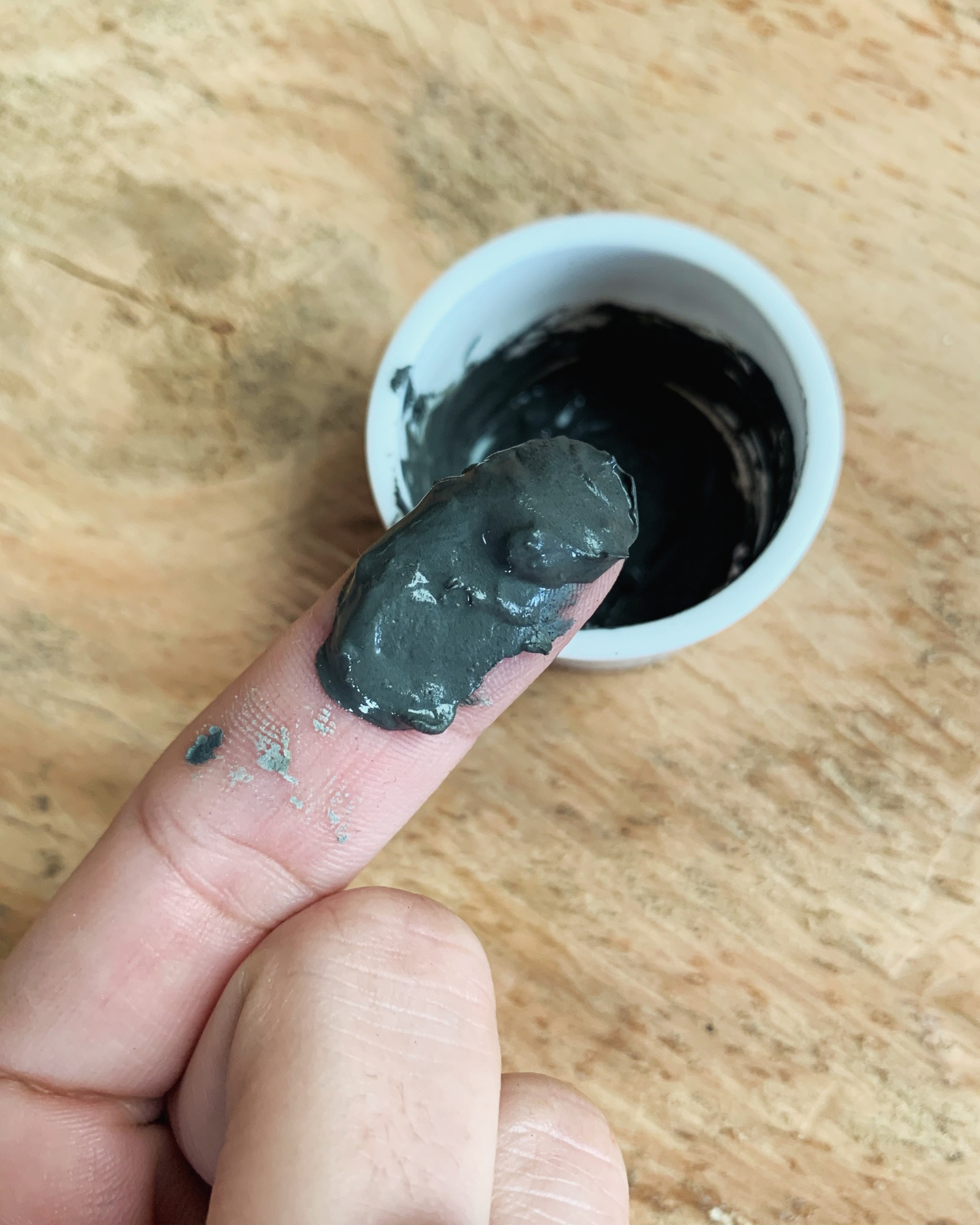Last Updated on July 17, 2025
“The primary purpose of passing laws to control women’s fertility is to obscure the fact that it’s not possible to control our fertility.” — Yolande Norris-Clark
The recent overturn of Roe v. Wade in the United States has led to a great deal of discussion around women’s rights and the ever heated subject of abortion. Yet, despite all the conversation surrounding these recent changes, it is rarely acknowledged that while laws might be passed indicating otherwise, women will always own their fertility. Modern females have all but forgotten this, but for thousands of years, women have been avoiding & releasing pregnancies, entirely outside of the system and without permission from anyone.
Now, this isn’t me advocating for sketchy back alley abortions. I don’t see that as a good solution. Instead, this is a call to something bigger and much more powerful — a reclamation of our fertility. I recognize that this is a foreign notion in a culture that teaches us to be ashamed of our our bodies, to disconnect from our monthly rhythms, and ultimately to disassociate from our feminine power. But, there is a wild woman inside of you that knows the way back.
One of the best ways to avoid abortion is to educate ourselves (and other woman) on how to not get pregnant in the first place. This is another aspect of the conversation around abortion that is rarely mentioned. No matter which side of this issue you are on, I think we can all agree that abortion is not the ideal solution to unwanted pregnancy.
In mainstream culture, the birth control pill or a hormonal IUD are the common solutions for contraception. But, these medications can have some serious health implications, including increased risk of blood clots, stroke & cancer, disruption of the gut flora, decreased thyroid levels, increased inflammation, and depletion of essential nutrients.
There is more holistic approach to avoiding unwanted pregnancy. But, conscious contraception requires a bit more effort and personal responsibility than conventional methods. It involves tuning in to the body, listening to its rhythms, and totally owning our fertility.
Fertility Awareness Method
Did you know that most women are fertile for only a few days per month? You’d be surprised how many modern women don’t actually know this basic biological fact. There’s no shame if that was you! This awareness is the first step to reclaiming your fertility.
A woman’s egg can only live up to 24 hours. Two or more eggs may be released over a maximum time period of 24 hours. So, technically a woman is fertile for only a day or two. A man’s sperm, however, can live for up to 5 days in fertile mucus (they only usually live a couple of hours to 3 days in drier, less fertile mucus). So this means there’s a window of about a week where a woman could get pregnant each month.
While normal cycle lengths are 21-35 days (28 days being “average”), monthly cycles will vary among women, and will fluctuate for each individual, as well. The Fertility Awareness Method (FAM) is a way to determine if a woman is fertile on any given day. It is a useful tool for all women, not just those wanting to avoid pregnancy. When practiced consistently, it’s a wonderful way to tune into your body and to learn & better understand her rhythms.
The Fertility Awareness Method is scientifically validated. It involves observing the three primary fertility signs: cervical fluid, waking temperature, & cervical position each and every day and charting them throughout the month. Observing changes to cervical position is optional, as the other two signs will give a good indication of fertile status, but it can certainly be noted for extra clarity. As a woman approaches ovulation, there will be obvious changes that indicate the woman is nearing her fertile phase.
If used correctly every cycle, and you abstain from intercourse or utilize a barrier method during the fertile phase (about 8-10 days per cycle), FAM has a very low failure rate — only 2% per year. This is lower than any other barrier method, besides condoms which also have a failure rate of about 2%. It should be noted that if the barrier method you are utilizing during the fertile phase has a higher failure rate than 2%, the failure rate should be adjusted based on the specific method you are utilizing.
To be clear, FAM is not the rhythm method, which is an ineffective method of birth control that utilizes data collected on past cycles to predict future fertility.
I highly recommend reading Taking Charge of Your Fertility by Toni Weschler to learn all the specifics of using Fertility Awareness Method to avoid pregnancy. The Free Birth Society podcast episode FAM: Understanding The Basics Of The Fertility Awareness Method and the Fertility Friday podcast, episode 398: Using Fertility Awareness for Birth Control both give a great overview of how to utilize this method for contraception.
There are of course, times where things don’t go as planned, whether it be a barrier method failure (i.e. the condom breaks), a heat of the moment situation, or rape. In these situations, FAM is still an essential first piece.
Since the overturn of Roe v. Wade, many states have passed legislation making abortion illegal after 6 weeks of pregnancy. If you aren’t familiar with how healthcare professionals calculate these weeks, this may seem like ample time. But, pregnancy is calculated from the date of the woman’s last period. Which means, a woman is already considered 4 weeks pregnant by the time she misses her period — which is often the first indication of pregnancy.
If a woman is in tune with her body, she may notice other symptoms before this. But, there is a great deal of overlap between very early pregnancy signs and PMS symptoms, so until a woman’s period is late, it can be hard to determine which is the true cause. All of this to say, by the time a woman misses her period, she will have only 2 weeks to seek an abortion in states with this type of law. And this is assuming a woman will notice her period is late the day it is due. Many women don’t track their cycles, and because of this, won’t even realize they’re pregnant until after the 6 week cut off.
So, even if you fail to prevent pregnancy with FAM, more intimate knowledge of your cycle will still allow you to find out that you are pregnant right away, which gives you more time to decide what the best course of action is. And truthfully, if you do decide to terminate a pregnancy, sooner is always better, no matter what method is used. The more established a pregnancy becomes the more difficult the release can be.
Just a note, I’m not going to be talking about at-home or “natural” abortions in this blog post. Releasing a pregnancy with herbs is not something to be taken lightly. I’ve seen a few herbalists post about this recently, suggesting women who are pregnant will definitely want to avoid these herbs (wink wink). And while I totally advocate for people learning how to use herbs to support their health & well-being, I’m honestly uncomfortable with women who have no prior knowledge or relationship with herbs trying to end a pregnancy themselves with a cocktail of plants they read about on the internet.
Despite the fact that herbs are “natural,” this doesn’t mean there isn’t a risk of toxicity. There is a lot of nuance (i.e. dosage, frequency, method of preparation, etc.) to using plants to end a pregnancy, without doing harm to the mother. And this is certainly something I won’t recommend, without the guidance of someone who is experienced in these methods of pregnancy release.
This doesn’t mean that herbs can’t be used to support a woman to avoid an unwanted pregnancy, however. Optimally, these herbs are utilized to discourage implantation before it occurs, as it is much easier (physically and emotionally) to prevent a pregnancy than to release one.
Ultimately, herbal contraceptives work best when paired with the Fertility Awareness Method. Knowing where you are in your cycle will give you an indication as to whether you are at risk of becoming pregnant if there is an “oops.” This can give you peace of mind, and allows you take preventive measures to avoid implantation, so that pregnancy can be still avoided.

Herbal Contraceptives
There are two main types of herbal contraceptives I will be discussing in this post — implantation preventives and emmenagogues. But, this is definitely not a comprehensive overview on all the ways one can utilize herbs to avoid unwanted pregnancy. Susan Weed’s book, Wise Woman Herbal for the Childbearing Year, offers more information on this topic.
Implantation preventers can be used after intercourse that has potentially resulted in a fertilized egg to help prevent that egg from implanting and thus, stop a pregnancy from establishing.
Queen Anne’s Lace or wild carrot seed (Daucus carota) is an herb with a long history of use as a contraceptive, due to its effect of making the uterine lining “slippery” or inhospitable to implantation. One teaspoon is taken daily at the time of ovulation, or immediately after unprotected intercourse until menstruation. Seeds should be taken daily for a minimum of a week. This is an important detail, as taking the seeds irregularly or for less than a week may result in unwanted pregnancy. The seeds can be chewed or ground in a grinder before consumption. Queen Anne’s Lace seeds are strong tasting as a result of turpenes, the constituents that give them their potency.
While one study animal study found that an alcoholic extract of Daucus carota seed had an anti-fertility effect and helped to prevent implantation (Bhatnagar, 1995), wise women who have seen this herb utilized time and time again have observed that actually ingesting the seeds has shown the best results for preventing pregnancy in human women.
It should also be noted that while Queen Anne’s Lace has a long history of use as an emergency contraceptive, similar to the “morning after pill,” there have not been studies that research the safety of using this herb on a regular, long-term basis, as one would use the birth control pill. Thus, this herb is best utilized as a backup when primary methods of contraception have failed.
Queen Anne’s lace seeds aren’t readily available commercially, but the plant grows abundantly as a weed in many places in North America. If you do harvest your own seeds, please learn to properly ID this plant, as poison hemlock (Conium maculatum), which is deadly when ingested, is a relative. (Carrots are also in Apiaceae family, just to put this piece of potentially frightening information into perspective.)
Emmenagogues are herbs that stimulate the blood flow to the uterus and promote delayed menstruation. They are also known as “menstrual promoters.” If there are concerns about the possibility of becoming pregnant, using these herbs a week before your period is expected would be an excellent course of action to ensure that menstruation comes when it is due. If your period is a day or two late, an emmenagogue may bring it on, but again it is ideal to begin using these herbs before a missed period. The following are a few common menstrual promoters.
Ginger (Zingiber officinale) is a strong and fast acting emmenagogue. To prepare, Weed recommends putting 1 tsp of powdered root in a cup and pouring boiling water over it or making an infusion of 1 oz freshly grated root per pint of water. Do not drink more than 4 cups per day.
Angelica root (Angelica archangelelica, A. sylvestris, and A. sinensis) is a powerful emmenagogue and uterine stimulant. Weed advises taking the tincture at a dose of 10 drops three times daily for four days.
Pennyroyal (Hedeoma pulegioides and Mentha pulegioides) has long been used to improve blood flow to the pelvis, stimulate uterine contractions, and promote menstruation. Weed says to drink an infusion of the leaves, as hot as possible, or to take 20 drops of the tincture in a cup of hot water. Do not take more than 4 cups of either per day, and do not consume pennyroyal preparations for more than 5 days. Pennyroyal oil can also be rubbed over the pelvic region (avoiding sensitive tissues) to bring on menstruation. *Please note: Pennyroyal essential oil can be extremely toxic when taken internally, even in small doses, and can cause death. Pennyroyal oil should always be utilized with respect, awareness, and caution. Never take pennyroyal oil internally!
Parsley (Petroselinum crispum) can be used internally to bring on menstruation. Weed describes the following method: insert several sprigs of the fresh herb into the vagina, and change them twice daily, for 3 days.
This is by no mean a comprehensive list and there are countless other emmenagogues. Weed’s book, Wise Woman Herbal for the Childbearing Year, provides many other examples, as well as dosages.
Conscious contraception is an important first step that women can take to empower themselves if they feel concerned about the possibility of becoming pregnant and lacking access to clinical abortion services. Quite frankly, doctors and lawmakers have never owned female fertility. It’s time to reclaim what is ours.
If you’re looking to dive deeper into everything I’ve discussed in this post, these resources offer a wealth of knowledge:
- Beyond the Pill by Dr. Jolene Brighten
- Conscious Contraception, Abortion, and Miscarriage Outside of the Medical Paradigm with Samantha Zipporah — Free Birth Society Podcast
- “Ending Pregnancy at Home: Holistic Abortion Options” — Mythic Medicine Podcast, Episode 73.
- “Womb Sovereignty, the Dark Feminine, and Mythopoetic Pregnancy Release” — Mythic Medicine Podcast, Episode 74.
- Herbal Healing for Women by Rosemary Gladstar
Those interested in a detailed history of regulations around female fertility, birth control & abortion may enjoy Sex and Herbs and Birth Control: Women and Fertility Regulation Through the Ages by Ann Hibner Koblitz.
*Please do your own research and use any and all herbal remedies respectfully and with the understanding that just because herbs are “natural” does not mean they shouldn’t be used with knowledge and caution. If you plan to use herbs as an emergency contraceptive, developing a relationship with these plants and acquiring the necessary remedies before they are actually needed is optimal.
The information detailed above does not address sexually transmitted infections. The Fertility Awareness Method will not prevent STIs. Please remember to utilize appropriate barrier methods, have open & honest communication with your sexual partner(s) — in addition to regular STI screenings, as appropriate.
You’ll also want to note that I’m not a medical doctor and none of what I’ve shared in this post for educational purposes should be considered medical advice. Personal responsibility doesn’t stop with our fertility, but rather is the choice to completely own all of the decisions we make in life and any implications they might have.
References
Ansari, A.S., Sevliya, K., Mohammad, I., Badar, A., and Lohiya, N.K. “Plants for Female Fertility Regulation: A Review.” Journal of Pharmacology and Toxicology, 12, 2017. pp. 57-75. https://docsdrive.com/pdfs/academicjournals/jpt/2017/57-75.pdf
Bennett, Robin Rose. “Plant Medicine Series: Wild Carrot.” June 21, 2017. https://m.youtube.com/watch?v=STaMxuJIgjw
Bhatnagar, Upendra. “Postcoital contraceptive effects of an alcoholic extract of the Daucus carota Linn seed in rats.” Clinical Drug Investigation, 9(1), 1995. pp. 30-36. https://link.springer.com/article/10.2165/00044011-199509010-00006
Brighten, Jolene. Beyond the Pill.
Brighten, Jolene. “Birth Control — What Doctors Don’t Say About Birth Control Effects.” January 5, 2022. https://drbrighten.com/birth-control-what-your-doctor-didnt-tell-you/
Brighten, Jolene. “Non-Hormonal Birth Control – Alternatives To The Pill.” January 5, 2022. https://drbrighten.com/non-hormonal-birth-control-alternatives/
“Conscious Contraception, Abortion, and Miscarriage Outside of the Medical Paradigm with Samantha Zipporah.” Free Birth Society Podcast. May 10, 2019. https://www.freebirthsociety.com/blogs/the-free-birth-podcast/conscious-contraception-abortion-and-miscarriage-outside-of-the-medical-paradigm-with-samantha-zipporah
“Ending Pregnancy at Home: Holistic Abortion Options.” Mythic Medicine Podcast, Episode 73. November 13, 2020. https://mythicmedicine.love/podcast/holistic-abortion
Gladstar, Rosemary. Herbal Healing for Women.
Jansen, G.C., & Wohlmuth, Hans. “Carrot seed for contraception: A review.” Australian Journal of Herbal Medicine, 26, 2014. pp. 10-17. https://www.researchgate.net/publication/289343049_Carrot_seed_for_contraception_A_review
Weed, Susun. Wise Woman Herbal for the Childbearing Year.
Weschler, Toni. Taking Charge of Your Fertility.
“Womb Sovereignty, the Dark Feminine, and Mythopoetic Pregnancy Release — Samantha Zipporah.” Mythic Medicine Podcast, Episode 74. December 17, 2020. https://mythicmedicine.love/podcast/samantha-zipporah





